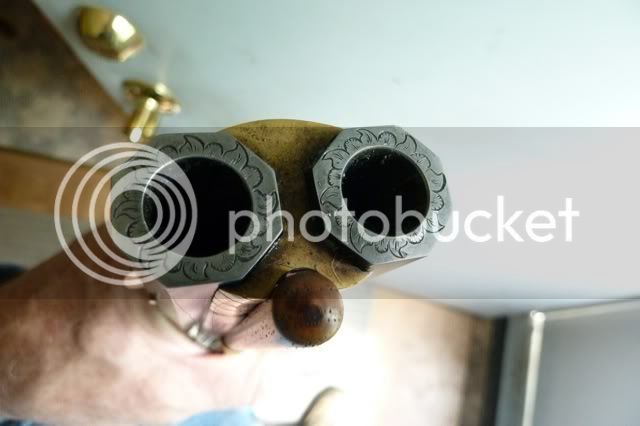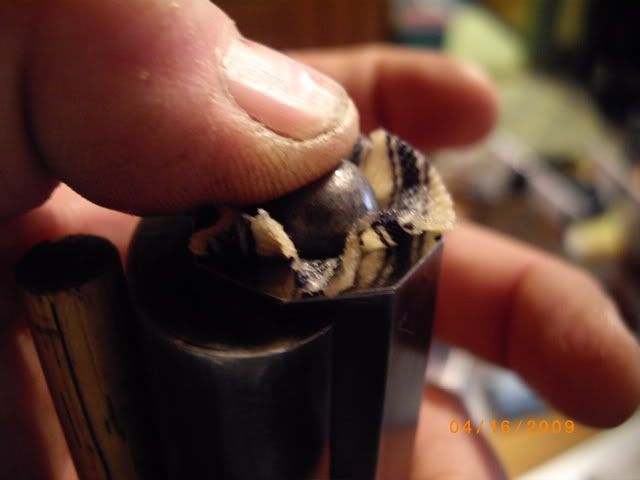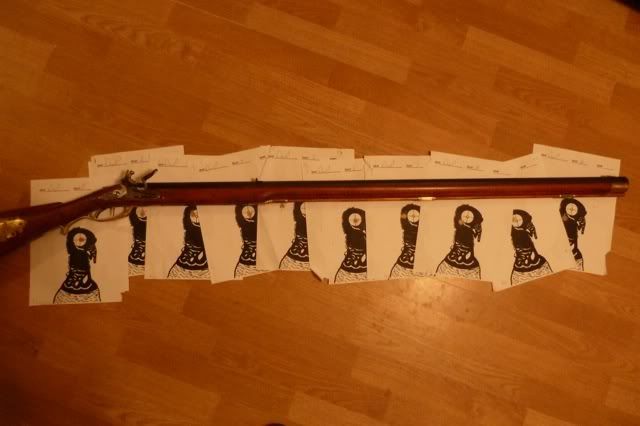Dan
cynthialee said:
Damnit Dan,
Every time I read one of your safety or workmanship quality posts I get all freaked out and ready to cart all my factory made muzzel loaders to the county dump.
You are freaking me out.
I almost took a CVA breach apart back a week or so ago because of your panick the noobs posts.
There I got it out and I feel better now.
Other than that I like you and I am sure to read your posts when I see them. But you have a tone in your safety posts that puts panick in my heart.
"Panic the noobs?"
When I talk about keeping the shooters head between me and the breech I am not kidding. I have been known to retreat behind cover after watching some "Noob/Boob" load a homemade cannon for a salute to start a match. Packing it hard with an iron rammer. Only to find friend already there for the same reason. I had all the experience with the "zing" of shrapnel cutting the air and the smell of maimed bodies I needed by the time I was 21.
If you do RESEARCH and take apart enough guns or have contact with people who have you WILL get nervous and you should. Builders relate horror stories related to chlorate powder use.
But people prefer the "head in the sand" approach to thinking about firearms workmanship and materials. Its more comfortable.
Couple this with the use of powder made with Perchlorate and the chances of a corrosion related failure of one kind or another increase greatly as well.
Start asking questions at matches. Most people don't volunteer information but there are others who have blown out nipples and had drums break off.
Look CLOSELY at the firearms people shoot substitute powders in. Look for pitting and "frosting". Was the barrel hot tank blued (as all the factory mades are) and now the barrel has no internal blue? Does it foul excessively if BP is used? These are signs of a pit either a frosty looking micro pit (this will look like little craters of the Moon under magnification) or pitting to the point that it holds excess BP fouling when the traditional propellant is used. This may be more pronounced below mid point of the bore than at the muzzle. Many pitted bores will become unusable with BP due to excessive fouling buildup before accuracy suffers with the substitute.
I am not attempting to panic anyone but people need to have the information to make informed decisions.
Here is an example, of sorts, its fresh in my mind and angered me since a woman I know was maimed doing something that people told them not to. I.E. Make cast a iron Ballard action into a centerfire rifle. This summer at a major BPCR match it failed and her left had was seriously injured.
The amazing part was two other individuals who had also converted or had someone else covert cast Ballards to CF continued to use the rifles through the rest of the match. They did not fail. Does this mean they are safe? No it means the shooters were lucky.
What does this have to do with MLs? The moral is that people should not shoot guns made of unsuitable materials, or by extension improperly assembled firearms (Ballards need to be "setup" by someone who knows how they really work to be truly safe). No matter which end its loaded from.
This has been brought to the "modern" shooting public's attention by failures in modern shotguns, pistols and rifles by big name makers who cut a corner on material selection, some very recently.
So its not just MLs.... The difference is that the modern makers cannot always use the "handloader" defense. A "loophole" successfully used to keep makers of ML guns/components with poor engineering and substandard materials safe from harm for decades now... So, in the end, they are largely immune and some just don't seem to care as a result.
And then there is a fallacy that its impossible to blow up a ML with BP. So if one DOES fail the shooter often blames himself. Not understanding that the use of improper steels can result in barrels failing after thousands of rounds due to the steel failing from repeated firing.
Improper material choices can result in failure at anytime or never failing. But the chances of a failure are increased by poor choice of materials, in the case of many ML barrels risks are taken by the use of steels that a steel maker, decades ago, stated should not be used for gun barrels. The fact that some barrels made from the steel will stand incredible overloads when tested further confuses the issue. But its not possible to pressure test material that has properties that make it unsuitable. It may pass the pressure test then fail, either just because or because the over pressure set up the failure by making the material just a little more brittle.
BP simply will not produce the pressure needed to burst a modern steel barrel. The steel is too strong, yet barrels fail. Why? The steel, while more than strong enough for any BP pressure level ON PAPER has PROPERTIES that make it subject to brittle failure at pressures far lower than its paper tensile strength. This is why a relatively weak material like clean wrought iron is actually safer than some modern, brittle, free machining steels. "Best quality" wrought iron was used in our Rifle Muskets of the CW. Once proved to eliminate barrels with flaws in the weld or material they were considered safe and many are still in use.
Unsuitable material cannot be proved to show its safe since the material is inherently unsafe as a gun barrel. Basically the steel may fail at anytime at a pressure level that is a fraction of its paper strength because it has poor strength when subjected to internal pressure and shock. In other words it might tolerate a number of overloads then fail at a far lower pressure level with the next shot or the 10000th or never. Shock loading is a major factor in firearms barrel/cylinder failures of all kinds. The faster the pressure is applied the weaker the material becomes. It is the rapid pressure rise that allows an HE to "cut" a steel beam. The same pressure level, applied over a longer period of time will at most only deform the steel. "Flashover" type events with light loads of smokeless produce a HE velocity pressure rise and this will "break" any steel with charges that simply cannot produce the pressure needed to burst a barrel. BP barrels that fail fail primarily due to shortcomings in the material.
High quality 4150 is the best barrel steel for almost any purpose. It is very resistant to internal pressure and shock. It is so strong as a "pressure vessel" that its impossible to harm it with BP loads. Since its used for barrels for cartridges that make something the 55000-65000 psi range including automatic weapons. Those with combat experience know how hot a belt fed MG barrel gets. These are a form of 4150 if I am correctly informed.
Steels, like those used to make screws in automatic screw machines (leaded screw stock) are not suitable for shock loading or internal pressure based on what I have been told by a retired metallurgist who is also a ML shooter and builder and the steel makers recommendations published in the old Buckskin Report back in the 1980s. But its cuts so smooth (its primary design criteria afterall), causes minimal tool wear and does not require any followup work once the grooves are cut so many ML barrel makers in the US use it.
If one blows up now and then "its the shooters fault" "because the barrels don't fail". Unless they do.
4150 is harder to cut, wears tools at an increased rate and may well need a lapping operation to smooth the bore afterwards.
So its easy to see why the hobby-home grade barrel makers like the stuff.
Surprisingly, or maybe not, the Italians, Pedersoli and others as well I am sure, use a good barrel steel. But then the guns all have to be run through a gov't proof house.
The stuff coming from India for the re-enactor groups? At least two of these have burst with blank charges with no wadding...
So since I have been slow in developing the ability to regrow body parts I have become more and more cautious as I get older.
Dan








